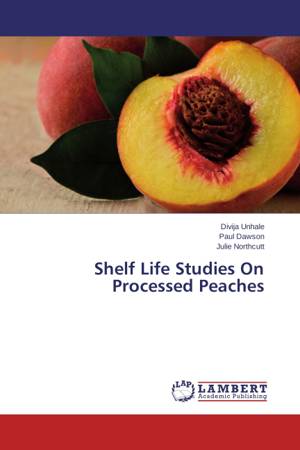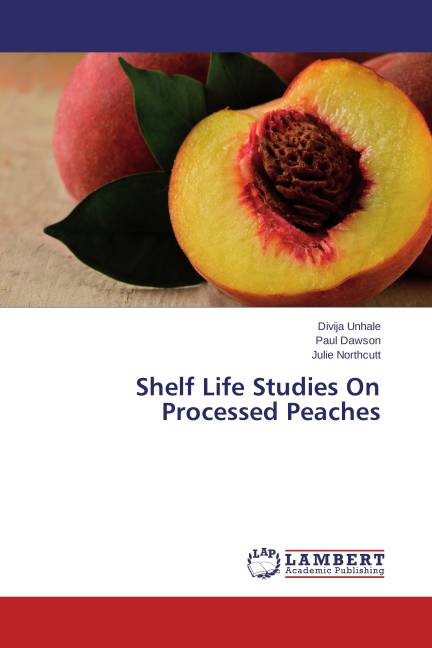
- Afhalen na 1 uur in een winkel met voorraad
- Gratis thuislevering in België vanaf € 30
- Ruim aanbod met 7 miljoen producten
- Afhalen na 1 uur in een winkel met voorraad
- Gratis thuislevering in België vanaf € 30
- Ruim aanbod met 7 miljoen producten
Zoeken
Shelf Life Studies On Processed Peaches
Divija Unhale, Paul Dawson, Julie Northcutt
Paperback | Engels
€ 28,45
+ 56 punten
Omschrijving
A series of experiments were conducted on the preservation of fresh peaches using freezing and heat (hot-filled packaging). In the first experiment, the effects of four calcium salts (calcium chloride, calcium lactate, calcium citrate, calcium phosphate) on the texture of processed peach slices were determined. Peach slices were immersed in solutions containing dissolved calcium salts at levels of 0.5, 1 and 2 % for 1 minute then stored at 4 °C for 3 days. Treatments with calcium salts were firmer than non calcium treated peach slices at all levels. Calcium lactate at 2 % level was best in terms of texture and overall appearance. In a second experiment set, effects of calcium salts at 3 % level was also determined for three different varieties of peaches (Autumn prince, Big Red, O Henry) with a dipping time of 5 minutes. Increase in the level of calcium salts to 3 % did not generally improve the texture of peach slices. The effect of calcium salt combined with antibrowning agents on shelf life of peach slices was also studied. Peaches of Autumn Prince Variety were lye peeled, dipped in 1 % citric acid and were mixed with CaCl2 at the levels of 0, 0.5 and 1 % along with 0.5% citric
Specificaties
Betrokkenen
- Auteur(s):
- Uitgeverij:
Inhoud
- Aantal bladzijden:
- 76
- Taal:
- Engels
Eigenschappen
- Productcode (EAN):
- 9783659562808
- Verschijningsdatum:
- 11/08/2014
- Uitvoering:
- Paperback
- Afmetingen:
- 150 mm x 220 mm
- Gewicht:
- 122 g

Alleen bij Standaard Boekhandel
+ 56 punten op je klantenkaart van Standaard Boekhandel
Beoordelingen
We publiceren alleen reviews die voldoen aan de voorwaarden voor reviews. Bekijk onze voorwaarden voor reviews.











